- General Information for Residents
- Prefectural Housing
- Employment
- Education
- Traffic
- Disaster Prevention
- Food
- Taxes
- Safety
- Medical and Health Care / Insurance
- Foreign Resident's Guide (Opens in a separate window)
- Aichi Prefecture Medical Information System (PDF:34KB)
- The National Health Insurance (PDF:991KB)
- Differences Between H1N1/09 Influenza (Swine Flu) and Seasonal Flu
- Aichi Cancer Center
- Cancer Incidence in Aichi Prefecture
- AICHI HEALTH PLAZA (Opens in a separate window)
Disaster Prevention
Precautions for Earthquakes
Japan experiences unusually frequent earthquakes.
It is always important to know what to do in the case of an earthquake, in order to reduce damage and injury caused by earthquakes to the minimum possible.
Here are some basic guidelines to follow in preparing for earthquakes and dealing with their aftermath.
1. Advance Preparations
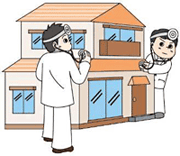
- (1) Improve your home’s earthquake resilience
- Evaluate your home’s earthquake resilience, and improve it through steps such as fastening down furniture and putting anti-shatter coatings on glass windows.
- (2) Stockpile water and foodstuffs
- You should have at least three days’ worth of drinking water and foodstuffs stockpiled. You should also have radios and flashlights prepared.
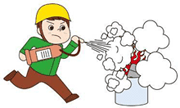
- (3) Participate in disaster training
- Get to know the people in your community better by getting actively involved in community disaster training.
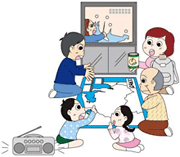
- (4) Discuss disaster preparedness with your family
- Verify how you will get in touch with each other and where the relief shelters are.
2. What To Do After an Earthquake
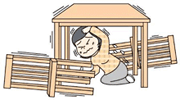
- (1) The first two minutes after an earthquake
-
- Protect yourself.
Stay away from furniture that could topple over, and hide under a desk or table. Do not panic and run outside.
- Protect yourself.
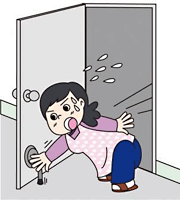
- (2) Immediately following an earthquake
-
- Prevent fires and secure escape routes.
Shut off gas valves and unplug electrical cords. If a fire breaks out, calmly begin to put it out. Secure escape routes by opening doors and windows.
- Prevent fires and secure escape routes.
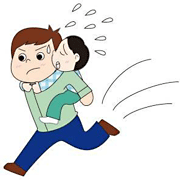
- (3) The first three days following an earthquake
-
-
Make sure your family is safe, and watch out for aftershocks.
Stay away from houses that have started to collapse. Call out to your neighbors, and depending on the situation, head for a shelter on foot. -
Assist neighbors with firefighting, rescue, and relief.
Cooperate with your neighbors to put out fires and rescue and attend to the injured. -
Fend for yourself.
Use the drinking water and food that you’ve stockpiled. Beware of false rumors and rely only on correct information.
-
Make sure your family is safe, and watch out for aftershocks.
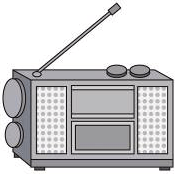
- (4) From the fourth day onward
-
-
Survival and Recovery
Even after four days, you should watch out for aftershocks. Stay informed. Work towards getting things back to normal.
-
Survival and Recovery
3. What To Do During an Earthquake
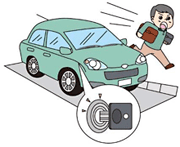
- (1) Stop driving.
-
- With a firm grip on the steering wheel, gradually reduce your speed, pull over to the left side of the road, and shut off the engine.
- Until the tremors subside, calmly assess your surroundings and use your car radio to stay informed.
- If you need to take shelter, leave your key in the ignition and the door unlocked. Taking your vehicle inspection papers and other important belongings with you, head for a shelter on foot.
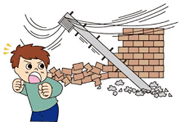
- (2) On the Road
-
- Don’t just stand there. Use a bag or something else to protect your head from falling objects such as glass and building signs, and seek shelter in an open area or park.
- Don’t get too close to cinder block walls or vending machines.
- Watch out for telephone poles that are about to fall over and dangling power lines.
- If there is no open space nearby, calmly assess your surroundings and move somewhere with a high degree of safety, away from buildings.
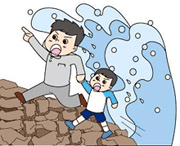
- (3) Near the Shore
-
- If you feel tremors, immediately seek the safety of high ground. Stay away from the shore until all tsunami alerts and warnings are lifted.
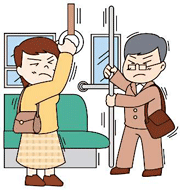
- (4) On the Train
-
- Grip the railing or hand strap tightly.
- Even if the train stops between stations, do not exit the train on your own through a window or door using the emergency door override.
- Calmly follow the instructions given to you by the conductors.








